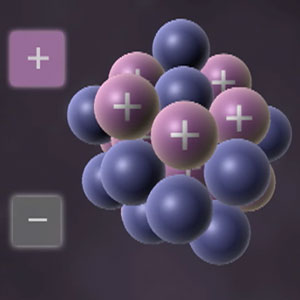Join us for conversations that inspire, recognize, and encourage innovation and best practices in the education profession.
Available on Apple Podcasts, Spotify, Google Podcasts, and more.
During this session you will have an opportunity to build understandings of the following concepts:

Particle model of water.
In the previous seven sessions, we’ve evolved the particle model of matter by examining a variety of macroscopic behaviors. In this session, we’ll extend the particle model even further to explain additional macroscopic phenomena, including electrical properties of matter. We will review the principles of the particle model of matter covered in the course, revisit macroscopic examples where they apply, and briefly survey recent developments in the understanding of matter. Can a refined model be applied to some exotic forms of matter like superconducting solids or Bose-Einstein condensate? What are other new frontiers in the scientific exploration of matter?
The final session begins by posing a question about whether we can explain the phenomena of “static cling” with the particle model we’ve been developing. Is there a principle of the model that accounts for this behavior?
We then review the four principles of our particle model through the lens of children’s ideas from Science Studio interviews and the content explorations from past sessions. Each principle is addressed with examples of the macroscopic behavior where it applies.
Next we follow some friends, Mark and Lauren, on a trip to the beach to look at the variety of phenomena they meet along the way. Is our model robust enough to explain the macroscopic behaviors they encounter? The story ends when our hosts point out potential places where the particle model may require extension, as in phenomena explained by the electrical properties of matter.
In Castro Valley, California, Linda Block prepares her fifth graders for a field trip to the Exploratorium in San Francisco by giving them hands-on experience with electrostatic forces between Styrofoam chips and rubbed plastic. We then follow the class on their field trip where we see a variety of examples of these forces at work in the exhibits at the Exploratorium. For a practical application of how electrical forces relate to the properties of materials, we visit Professor Christine Ortiz’s lab at MIT, where we see how an atomic force microscope allows us to indirectly “image” molecular structures.
The rest of the program is devoted to further examples of how experiments from the early 1900s and beyond have led to an ever-increasing sophistication of our model of matter.